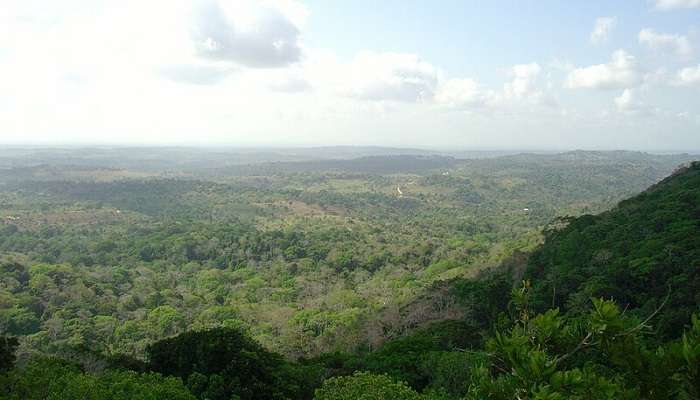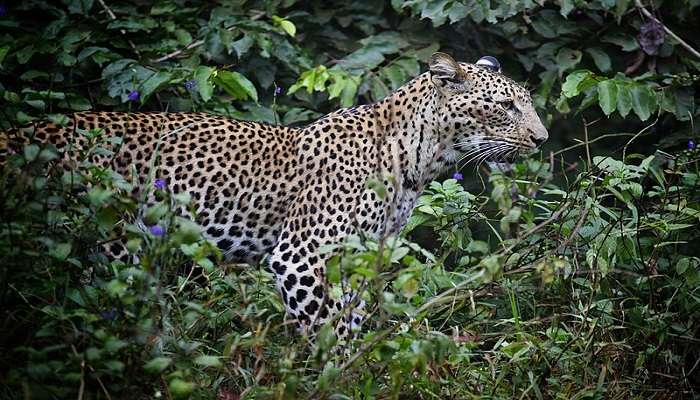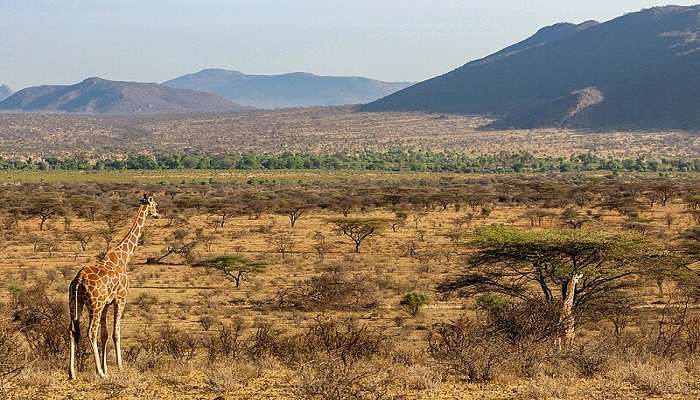Explore Shimba Hills National Reserve To Witness Incredible Biodiversity In 2025

Located in Kenya’s former Coast Province, the Shimba Hills National Reserve is a vast reserve encompassing grassland, coastal rainforest, and woodland. It spans an area of approximately 300 square kilometres. It is situated not too far from Mombasa and is known to house nearly half of the rare plant species found in the country, as well as several species of birds and butterflies. Moreover, the reserve houses many elephants and the only sable antelopes in Kenya. It is a popular picnic and camping destination.
An Overview of the Shimba Hills National Reserve

The Shimba Hills National Reserve is located in Kenya, formerly Coast Province, about 33 km from Mombasa. It is a vast green space that expands about 300 square km and comprises a coastal rainforest, woodland and grassland. You will also be exposed to a cascading waterfall called Sheldrick Falls. This reserve is a critical zone regarding Kenya’s biodiversity. It is known to house about 50% of Kenya’s rare plant species; there are 159 plant species here today. These species include some endangered orchids and cycads. Moreover, it contains many bird species, such as honeyguides, sunbirds, butterflies, pythons, African hawks, and falcons. You will also find other wildlife here, such as leopards, hyenas, waterbucks, sykes monkeys, and bush pigs.
The Shimba Hills National Reserve is famous for its massive population of elephants; owing to the large number of elephants here, which has caused an ecological imbalance, the Mwaluganje Elephant Sanctuary has been established nearby. There is also a boundary around the park, which prevents them from entering farmlands. Furthermore, the reserve has Kenya’s only population of sable antelopes. There are several fun activities for you to partake in while at the reserve. You can opt not only for a safari but also for game viewing. The reserve is an excellent place for trekking or hiking, and if you wish to stay overnight, you can stay at one of its cottages or set up camp. Given that the reserve features a body of water, fishing, diving, windsurfing, snorkelling, and water skiing are exciting activities for you to try. Perhaps go on a cave exploration excursion or mountain climbing if you feel more adventurous.
Must Read: Mombasa To Nairobi
Shimba Hills National Reserve Timings, Tickets

The Shimba Hills National Reserve is open daily from 6:00 AM to 6:00 PM. Regarding the entry fee for the reserve, tickets cost KSH 300 for adult citizens of Kenya and KSH 125 for children who are citizens. The entry fees are the same if you are a country resident. However, for non-residents, it costs USD 22 for adults and USD 13 for children. Booking your tickets online before your arrival is advisable as it is a quicker and smoother process, eliminating the need to wait in line.
When planning a visit to the reserve, it is best to come during the dry months, usually from June to September and December to March. This is because the sunny weather makes for a more pleasant experience. The grass tends to be shorter during this time, and it is easier to spot animals, mainly since frequent water bodies exist. On the other hand, the wetter months from October to November and April to May are less pleasant since rainfall can make it slightly difficult to explore the reserve to its fullest. However, a positive thing about visiting during the wetter months is that this period is best for bird watching.
Best Time To Visit Kenya

The peak season for tourism in Kenya is between June to September and from December to late March. During these periods, the weather is dry and pleasant, and this is the best time for safaris since the grass tends to be shorter, making it easier to spot wildlife. Moreover, the lack of mud makes it easier to get around natural reserves. However, given how popular these months are regarding tourism, tickets and accommodation rates are somewhat high, so make sure to book well in advance.
You can also come between October and November, which is shoulder season. Since there are fewer tourists, places are less crowded. The weather is slightly warmer, and there is more mud, but lush greenery is everywhere. Although spotting wildlife might be a little tricky, this is an excellent time for bird watching. April to May is usually the least ideal time to visit since it rains heavily during these months, making outdoor activities and safaris difficult. The humid and wet weather and mud everywhere make for an overall unpleasant time.
Suggested Read: Places To Visit In Kenya
How To Reach

The most common way to travel to Kenya is by air. The capital city, Nairobi, is home to the Jomo Kenyatta International Airport, which receives flights from different parts of Kenya and neighbouring countries and other international destinations, including the United States, Europe, the United Kingdom, the UAE, etc. There are three other airports in the country. Moreover, you can also take the local airline, Kenya Airways, to travel to cities in neighbouring African countries.
Since no direct trains link Kenya to neighbouring countries, you should take a bus when crossing the border. You can also opt for a car although it would take much longer to get here by road. The road to Shimba Hills National Reserve from Nairobi is Mombasa Road, which is 500 km long. Furthermore, you would need to have all the necessary documents ready to show at the border; border control can often take a little bit of time, and you would also need to be aware of the condition of the roads, which can also cause delays.
Further Read: Wildlife In Kenya
Visiting Shimba Hills National Reserve is an incredible opportunity you mustn’t miss out on when taking a trip to Kenya. The reserve is a great place to appreciate the country’s rich biodiversity and see rare animal species, birds, insects, and even plant species in person. You and your loved ones will have a memorable time in Kenya since it offers so much. Don’t forget to pack your camera to capture each moment for posterity!
For our editorial codes of conduct and copyright disclaimer, please click here.
Cover Image Source: Holger Günther for Wikimedia Commons
Frequently Asked Questions About Shimba Hills National Reserve
Does one need permission to enter Kenya?
Before coming here, you would need to go through a semi-automated system known as the Kenya Electronic Travel Authorisation (eTA). This system determines whether you are eligible to enter the country or not; the eTA’s permission is granted by the Kenya’s government. Remember that this is different from immigration and whether you are allowed to enter the country or not shall be decided by immigration authorities.
When should one apply for the eTA permission?
You can apply for eTA permission a maximum of 3 months before your expected visit to Kenya. However, you should apply for it at least 2 weeks before you arrive.
Can this reserve be visited at the weekends?
Yes, you can visit this national reserve at the weekends as well.
Are there accommodation facilities near Shimba Hills National Reserve?
Yes, there are many accommodation facilities near Shimba Hills National Reserve.
What is the most common mode of public transport in Kenya?
You would find that Kenya has a well-connected and fully functional public bus system that is not too expensive either. Moreover, the capital city of Nairobi also has a metro system.
People Also Read:
Masai Mara National Park Rajaji National Park Dudhwa National Park

As a Travel Content Writer, I live to conquer the world of globetrotting with words. With my unquenchable thirst for storytelling, I believe that my words will inspire you to travel around the world’s breathtaking landscapes. As for me, I am an unapologetic selenophile, who loves to wander around in a starry night!











